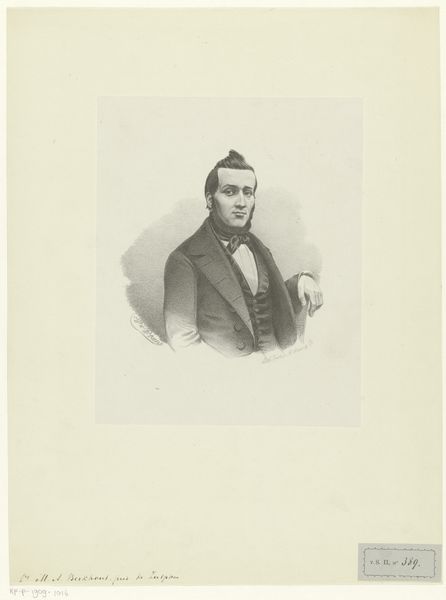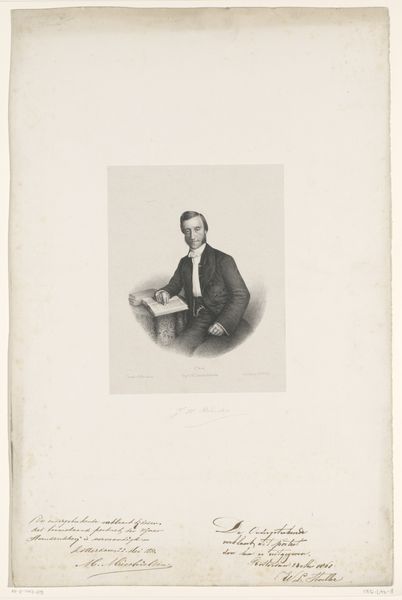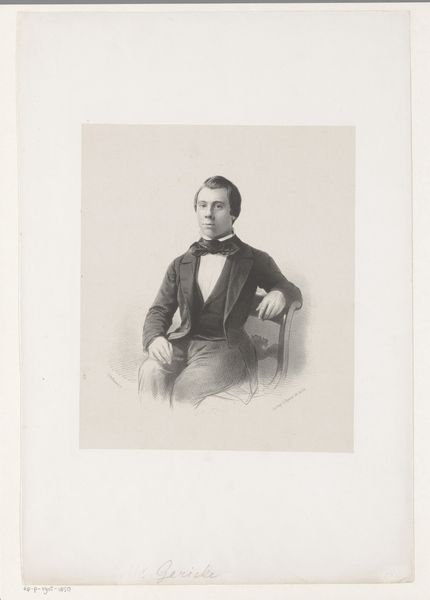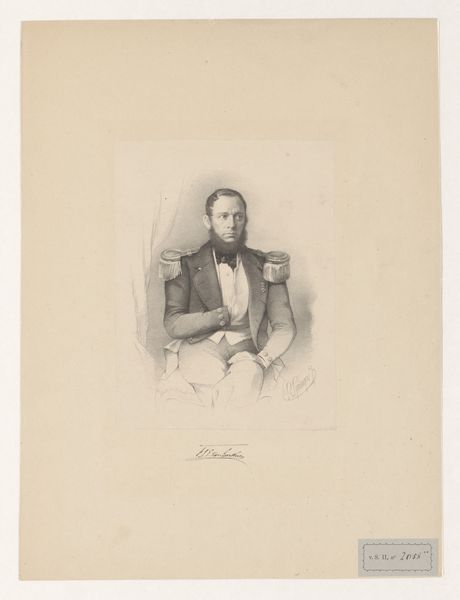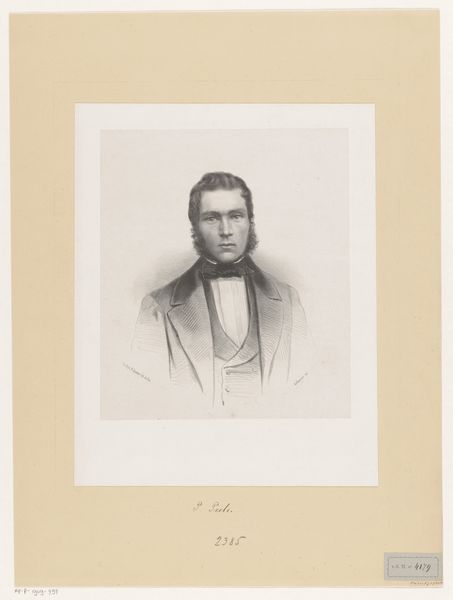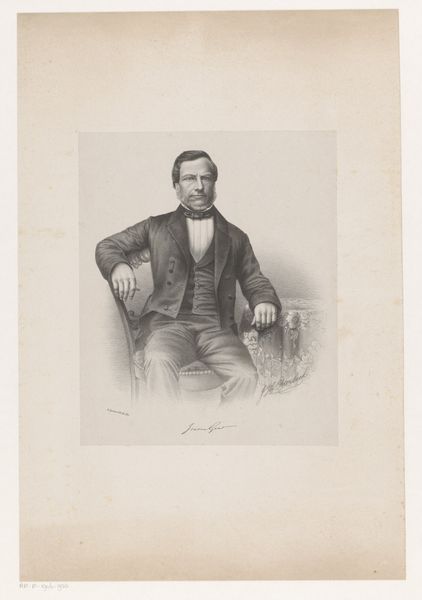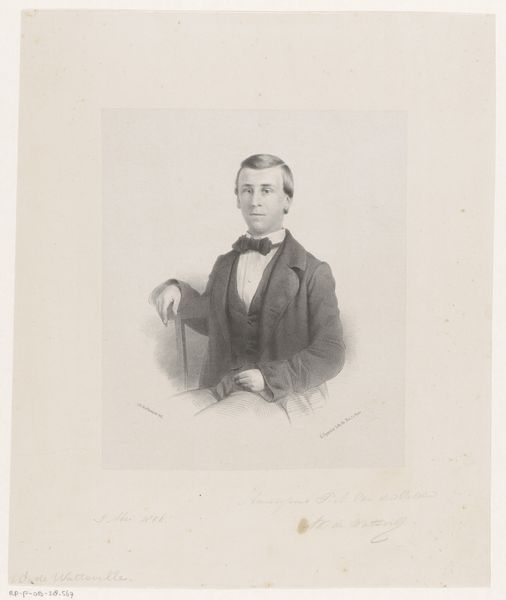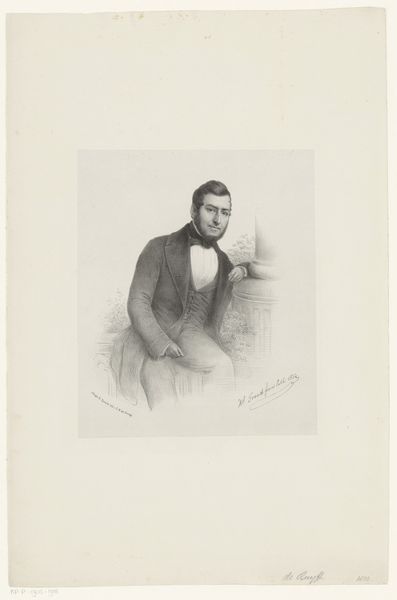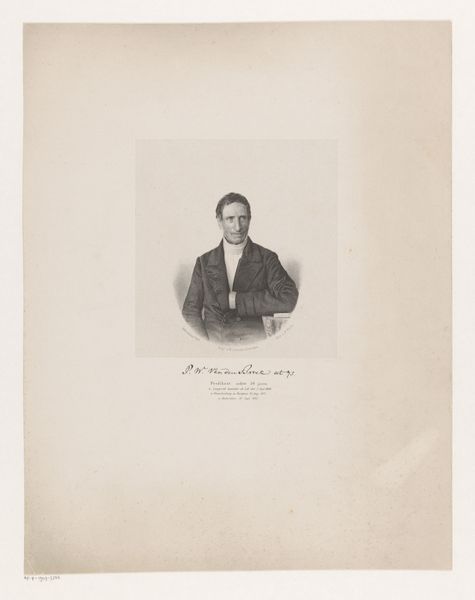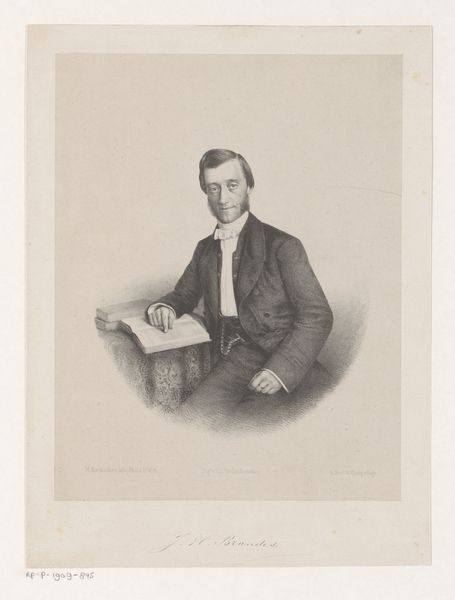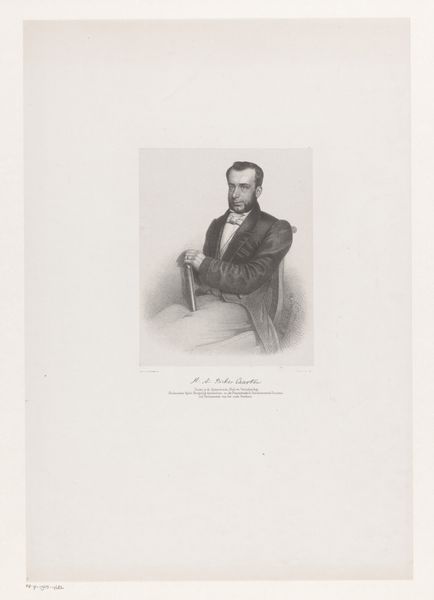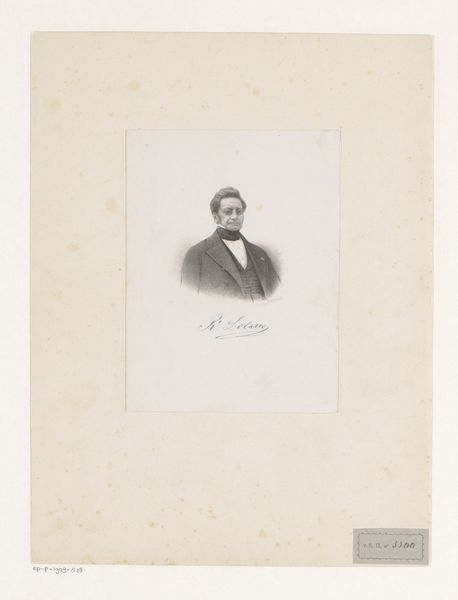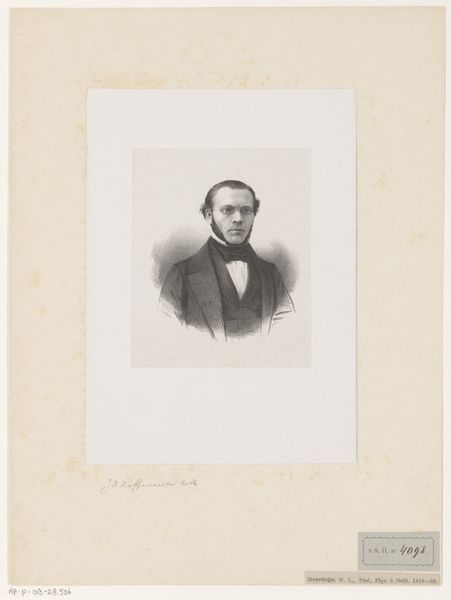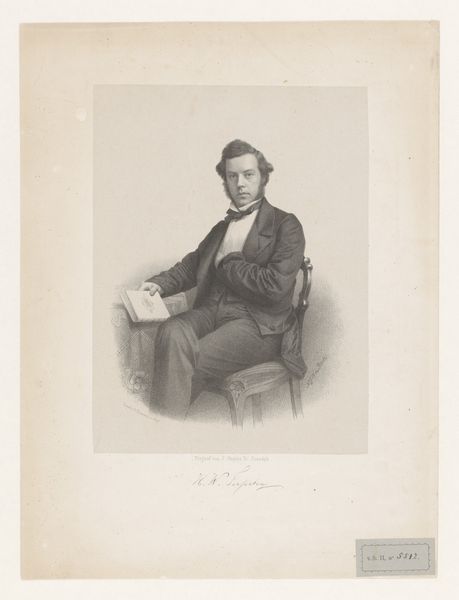
etching
#
portrait
#
etching
#
history-painting
#
academic-art
#
realism
Dimensions: height 490 mm, width 340 mm
Copyright: Rijks Museum: Open Domain
Editor: So, here we have "Portret van J. Brongers," an etching from 1844 by Coenraad Hamburger. There's a certain gravitas, almost a stiffness, to the man’s pose. What strikes you most about this piece? Curator: Oh, the delicious austerity! Isn’t it interesting how portraiture can sometimes feel like archaeology? This piece, it whispers stories of ambition and self-possession, doesn't it? Brongers, lounging but poised, is a man constructing his image. Have you noticed the details of his garments? Editor: You mean like his ornate vest and the cravat? There is a certain elegance that defines his style. Curator: Precisely! They speak of a burgeoning bourgeois class keen to define itself through fashion and formality. What a delightful tightrope walk this must have been, aspiring for that classic refined appearance without sliding into pure mimicry of aristocracy! The etching technique adds such delicacy to the subject, but did they capture Brongers’ personality? Or perhaps his aspiration? Editor: Hmmm… That's an interesting question. The crispness of the etching definitely gives it a formal feel. I can see the construction of persona that you described earlier! Curator: It is like peeking into the curated life of a man who clearly had things to say and positions to take. His pose, like the drape in the background, almost acts as a silent prompter! And what do we take from him, now? It makes you wonder, doesn’t it, about the narratives we craft and leave behind, whether etched in ink or woven into the tapestry of our fleeting existence. Editor: That's beautifully put! This whole discussion has given me so much to consider. I now see this portrait as less of a frozen moment and more of a narrative, an invitation to piece together the life of J. Brongers.
Comments
No comments
Be the first to comment and join the conversation on the ultimate creative platform.
